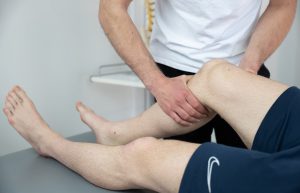
“I am involved in football, and I have been dealing with shin splints problem for 3 years now. I feel pain in both legs, more intensely in the left one. I don’t feel any pain while walking, but as soon as I start with faster movements than walking, the problem arises. I have been struggling with it for 3 years, and during that period, I have tried all sorts of therapies. Massages by physiotherapists, shockwave therapies, chiropractic treatments, energy therapies, body relaxation therapies, ice, mud, hot-cold water, video analysis of running, movalis tablets, etc., all unsuccessfully.
When there is a break between half-seasons, I take a rest, and after the preparations for the season start again, I initially have no pain, and then after some time, they reappear. I don’t know what else to try and do?”
The so-called shin splints syndrome is an overuse injury and represents the accumulation of micro-injuries to the tissue, which the body is unable to repair within the available recovery time. In this specific case, the localization of pain and inflammation, as a result of overuse, is on the inner side of the shin. The tibialis posterior muscle, which is the center of this problem, is responsible for balance and maintaining joint stability during running. Two facts are evident from the description of symptoms. First, local therapy does not yield results. The second is that the symptoms completely disappear after a longer rest. This latter fact is particularly important because it indicates that permanent changes in the tissues have not occurred, despite the duration of the symptoms. Cumulative stress can be reduced in this case in two ways. The first involves an examination to assess the mobility of all joints in the lower extremities (hips, knees, ankles) because stiffness in one or more of them directly and significantly increases stress on the tibialis, and then focused exercises aimed at eliminating that stiffness (from our experience, the hip and ankle are most often problematic). The second is a change in running technique in collaboration with an athletic trainer specialized in sprinting. Although it sounds simple, changing the way you run in sprint or change direction requires time and focus, as well as expert guidance.
